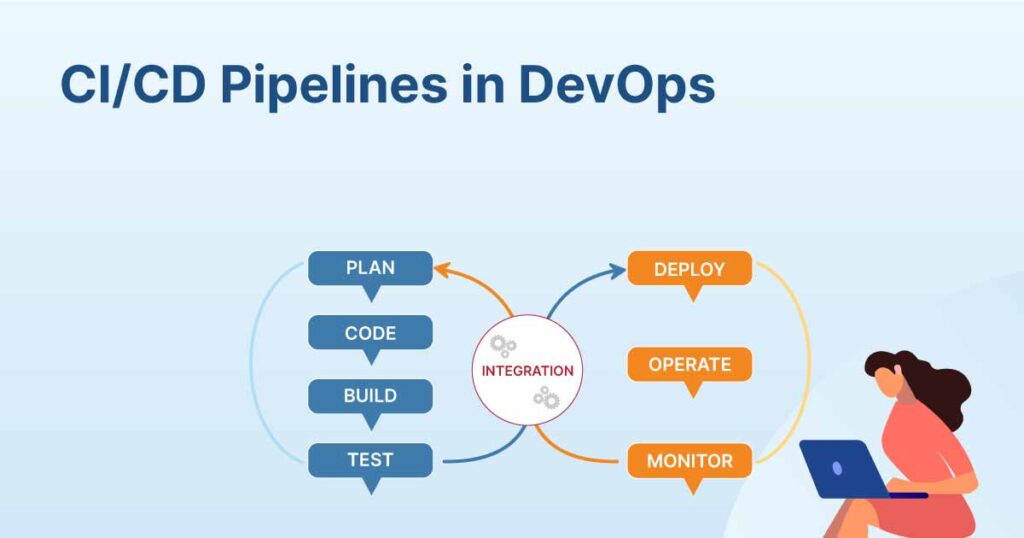-
Class Room Training
Hyderabad
-
Online Training
Join From Anywhere
-
Class Room Training
Hyderabad
-
Online Training
Join From Anywhere
Our Blog
Why Does Observability and Monitoring in DevOps Matter in 2025?

As the DevOps field moves in a fast and highly dynamic way, the distinction between Observability and Monitoring has become more pertinent. Depending on their goal, they ensure that the system is dependable and performs according to the given specifications. To comprehend this changing outlook and to consider where it can be headed, let us break it down a little with some bullet points.

Understanding the Basics of Observability and Monitoring in DevOps
- Classic Monitoring is the act of having set metrics and key threshold alerts. It is reactive, based on finding known problems.
- Observability is broader, allowing teams to uncover unknown unknowns with data to ask questions in the moment.
- Think about it this way: monitoring will tell you “something is wrong” – observability will tell you “why it’s wrong.”
Core Components of Modern Observability and Monitoring Systems
- Metrics, logs, traces, and events are all combined by observability to provide a deep, contextual understanding of system behavior.

- Observability platforms can pull in distributed tracing, dashboards based on context, and AI-based analytics to handle the complexity of systems.
The Mindset Shift from Traditional Monitoring to Observability
- Monitoring is prescribed through tools: you monitor what you have prescribed.
- Observability is driven by a mindset: you inspect what you did not expect.
- To make the shift to observability, DevOps teams will start to shift their culture to one best characterized as curious, experimental, and collaborative.
DevOps and Modern Architectures
- In today’s DevOps environments, we implement Kubernetes, microservices, and CI/CD pipelines – contributing to complexity.

- In today’s dynamic, transient environments, such as microservices and containers, traditional monitoring is inadequate. Only observability can offer the deeper, real-time insights that these dynamic systems demand.
- Observability adds real-time insight in contributing to understanding distributed systems, which are a necessity for cloud-native DevOps.
Limitations of Traditional Monitoring
- lack visibility into the root cause and typically depend on manual troubleshooting and guesswork.
- Doesn’t allow for a holistic context, particularly when decoupled services exist.
- Results in alert fatigue, among other things, from repeating/noisy alerts.
Advantages of Observability
- Encourages active debugging and shortens incident resolution times.
- Helps identify undocumented issues using ad hoc queries.
- Delivers context-rich traces that provide end-to-end visibility across Services.
- Uses machine learning and anomaly detection to increase accuracy.
Tooling Landscape
- Observability tools: Open Telemetry, Grafana Tempo, Jaeger, Honeycomb, New Relic One – provides deeper insights via logs, metrics, and traces.
- Hybrid tools: Prometheus + Grafana (with Jaeger or Tempo) and Elastic Stack (ELK) now offer monitoring and observability in 1 tool.
Coexistence vs Replacement
- Observation is part of monitoring, not separate.
- In high-availability systems, baseline monitoring still exists (CPU, memory, disk).
- Observability relates to monitoring and debugging issues or performance bottlenecks that are not obvious.
Security and Compliance
- With observability tools, you can track email access patterns, suspicious events, and audit records.
- These trends help inform incident response, compliance checks, and forensics.

- Less traditional monitoring simply doesn’t have the deep capabilities to meet modern security observability requirements.
Cost and ROI: Weighing Observability and Monitoring Investments
- Conventional monitoring is less difficult and less expensive.
- Observability involves lots of data ingestion, complex data storage, and expense, but provides greater ROI through lower downtime and quicker MTTR (Mean Time to Resolution).
- Wise organizations choose to weigh cost compared to critical insights and pursue hybrid options.
Final Thoughts
- Observability is not just a fancy term; it is rapidly emerging as a necessity in our high-scale, distributed DevOps ecosystem.
- But traditional monitoring isn’t going anywhere – traditional monitoring still provides valid basic health signals on systems.
- Instead of thinking about observability as replacing traditional monitoring, it is better to think about it as an evolution of monitoring, a wider view of monitoring.
Conclusion
Observability enhances monitoring, not replaces it. Both are necessary to maintain the speed, dependability, and flexibility of systems in contemporary DevOps environments.
Together, observability and monitoring offer the depth necessary to comprehend and address complex problems, while monitoring offers instant awareness. Faster response times, fewer unpleasant surprises, and greater production management confidence are the results. Observability adoption is a step toward more intelligent, proactive, and resilient operations.
Ace Web Academy encourages developers and DevOps professionals to learn more about modern observability tools and practices. Gaining proficiency in observability is not only advantageous but also a competitive advantage as more applications migrate to the cloud. It gives teams the ability to stay ahead of problems, maximize efficiency, and produce more dependable software more quickly.
Categories
- All
- Android App Development Tutorials
- Artificial Intelligence Training
- blockchain Training
- Content Marketing
- Content Writing Techniques
- Cyber Security
- DevOps Training
- Digital Marketing
- Diwali offer
- Dot NET Training
- Full Stack Development
- Infographics
- Internet of Things (IOT)
- Java Training
- Jobs & Placements
- PPC
- Press Release
- Resume Building Tips
- Search Engine Optimization (SEO)
- Social media marketing
- Social Media Optimization
- Summer Special Courses Training
- web designing
- Web Development
- WordPress & Blogging Tips
Copyright 2025 © acewebacademy.com. All Rights Reserved. A division of Infasta Soft Solutions Pvt. Ltd.



